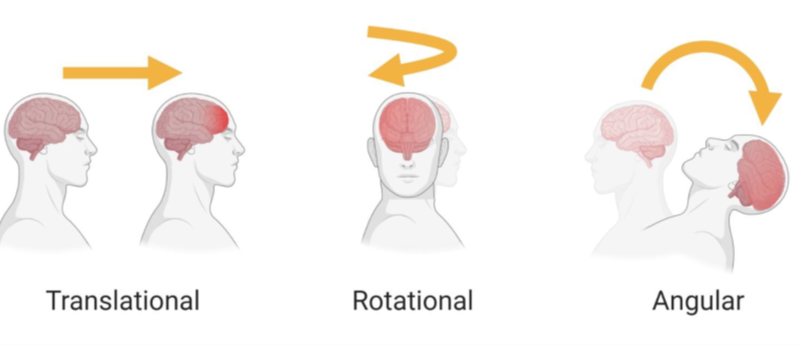
Title: Biomechanical basis of traumatic brain injury
Author: Sara M. AlQuran
Keywords: Traumatic brain injury, Biomechanics, acceleration, Blast injury, impact injury, impulsive injury.
Scientific editor: Dr.Omar Jbara
Linguistic editor: Philip Sweidan
Overview
Traumatic brain injury (TBI) is a large entity of diseases that results from an external insult to the brain by a mechanical force that may lead to either permanent or temporary loss of the brain’s cognitive, psychological or physical functions (1).
In 2016, more than 3.5 million people were reported to live with a disability from TBI, and around 1.7 million new cases occur each year in the US, which causes a huge economic burden (2).
Etiology
The causes of TBI vary according to the age of the patient. For example, in people younger than 75 years old road traffic accidents are the most common cause, while falling is the major cause in people older than 75 years old(3). Violence and abuse contribute to about 20% of TBIs and 3% can be attributed to sports injuries. (4)
Biomechanics
In order to understand biomechanics of TBI it is crucial to understand the head-brain anatomy complex and the protective layers that first encounter the trauma. Scalp, the most outer layer, is a 1-1.5 cm thick multi-layer of skin, connective tissue and pericranium that absorbs and redistributes the load before reaching the skull. Beneath the scalp is the neuro-cranial bone plates, the CSF holding the brain, the meninges, the vasculature and finally the brain (5). The brain is held in place by several structures such as the tentorium, parasagittal bridging veins, perisinusoidal granulations, and cranial nerves (6).
The brain is one of the softest tissues in the body (7). Characteristics and behaviour of the brain upon the application of force depend on its mechanical properties. The brain is described as a viscoelastic material, meaning that it displays both elastic properties upon being affected by high load forces and viscous properties with low load forces (8). Furthermore, the brain is heterogeneous in nature, the white and grey matter differ in characteristics and response to the force, with the white matter being stiffer (9). These mechanical characteristics and behaviour are greatly affected by age and diseases (10).
From the abovementioned, the impact of injury is determined by three factors:
- The amount of mechanical load that has been experienced by the head during the injury.
- The estimate of the transferred load into mechanical injury such as stress or strain.
- The tissue mostly affected, predicted depending on the characteristics of tissue and cell tolerance (11). the response and the behaviour of biological material under stress and force is determined by not just the amount of stress but by the rate and speed at which it is applied (8)
Physical Powers and Injury Mechanisms
Forces applied to the head can either be static, meaning that force is applied over a period of less than 200 milliseconds, or dynamic, meaning that it is applied quickly over a period of typically less than 50 milliseconds. The brain is commonly affected by dynamic forces in three ways: impact injury, impulsive injury or blast pressure (8).
As seen in Figure 1, impact injury is caused by striking the head with an object. On the other hand, impulsive injury results from the movement of the head as a result of the movement of another body part. Blast wave injury happens due to the propagation of pressure waves from a blast exposure (12).
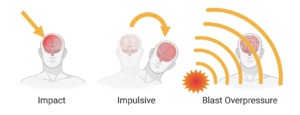
Figure 1: Types of Dynamic loading (8)
Injuries can be further classified into open (penetrating) or closed (non-penetrating). Open injuries fortunately resemble a very small portion, since their results are catastrophic and the damage mainly occurs due to the physical penetration and transection of the tissue by the foreign body (13). Closed injuries are mainly caused by contact and inertial forces. Contact forces are due to the direct impact of trauma while inertial forces are due to the acceleration of the head. Usually the injury happens due to the combination of these forces as they rarely happen in isolation (12).
There are three different types of acceleration that affect the skull and the head: translational, rotational and angular acceleration. As shown in the diagram, in the translational type, also known as linear, the centre of gravity in the head will move in a straight line without rotation and this usually results in focal injury, while in rotational acceleration, there is no movement of the centre but the head will rotate around it resulting in diffuse shear strain. Lastly, the angular type is a combination of both rotational and linear properties, and the centre of gravity moves in an angular manner. Angular type is the most common type responsible for the bulk of TBI cases. (14)
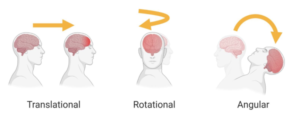
Figure 2: Types of Head Acceleration (8)
Events Taking Place in the Brain in Response to Trauma
The biomechanical investigations have found that the energy transferred to the head results in the creation of three-dimensional linear and rotational accelerations (3). In case of linear acceleration, the head will acquire acceleration when trauma affects it. Due to the brain’s inertia, it will first lag behind interacting with the interior lining of the skull (15). The brain moves anteriorly inside the cranial cavity, meeting the anterior cranial basal structures especially the sphenoid ridges, so the surface injuries and contusion are most commonly found at the bases of frontal lobes and the tips of temporal lobes. (6)
This movement will cause damage. The coup contusions result from the direct slapping effect against the skull, while the contrecoup result from the re-bouncing of the brain (16). The damage is explained by the fact that the movement of the parenchyma induces slight changes in the intracranial pressure causing short-lived pressure gradients; positive pressure is on the coup sites along with negative pressure at the contrecoup sites (17). Due to this pressure gradient, cavitation bubbles will develop in the area of negative pressure in the contrecoup site and these bubbles may cause local tissue damage (18). On the other hand, in case of rotational acceleration, there is a different mechanism of injury (19). rotational acceleration is thought to cause shear strain resulting in more diffuse injury (20)
The abovementioned processes and events happen in both impact and impulsive injuries. These injuries rarely happen in isolation.
Events Taking Place in the Brain due to a Blast Injury?
There are different theories that explain the mechanisms of injury in a blast-wave shock, despite the absence of any penetration and any object hitting the head. All of these theories have evidence supporting them and others confounding (21).
First, the acceleration mechanism: it is argued that linear and rotational acceleration and their resultant pressure gradients have been implemented in the process(22), although scientists have found that the duration of acceleration in a blast injury will not reach the threshold of causing damage to the brain(21).
Second, the direct cranial transmission of pressure waves has also been implemented in the injury mechanism (23) along with the thoracic mechanism theory that suggests the transmission of pressure waves from the thorax along with the vasovagal activation that may have a role in causing brain injury (24).


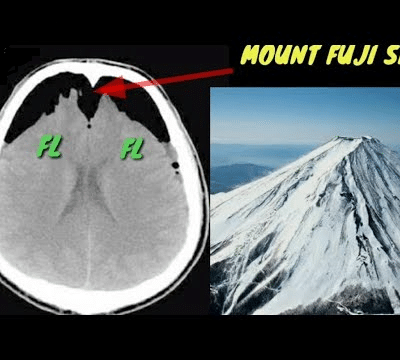
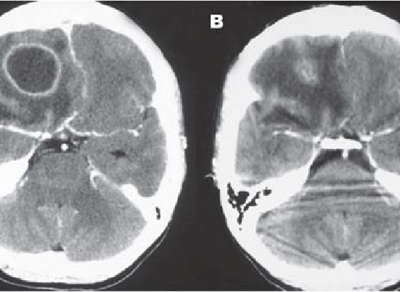
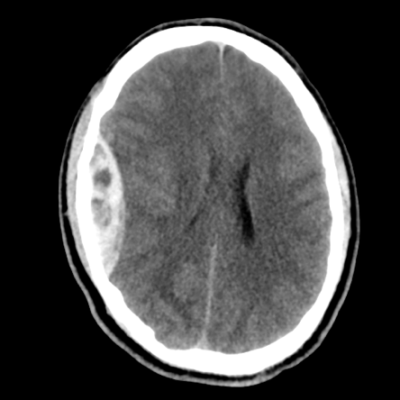
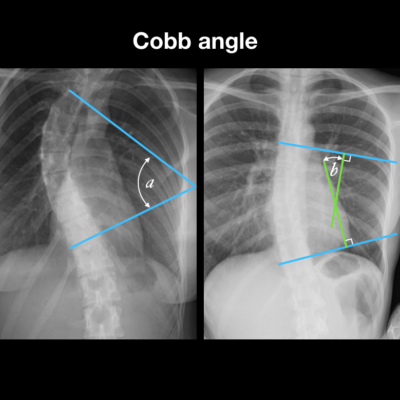


Love your work! Great Job, such an interesting topic Sara ❤️